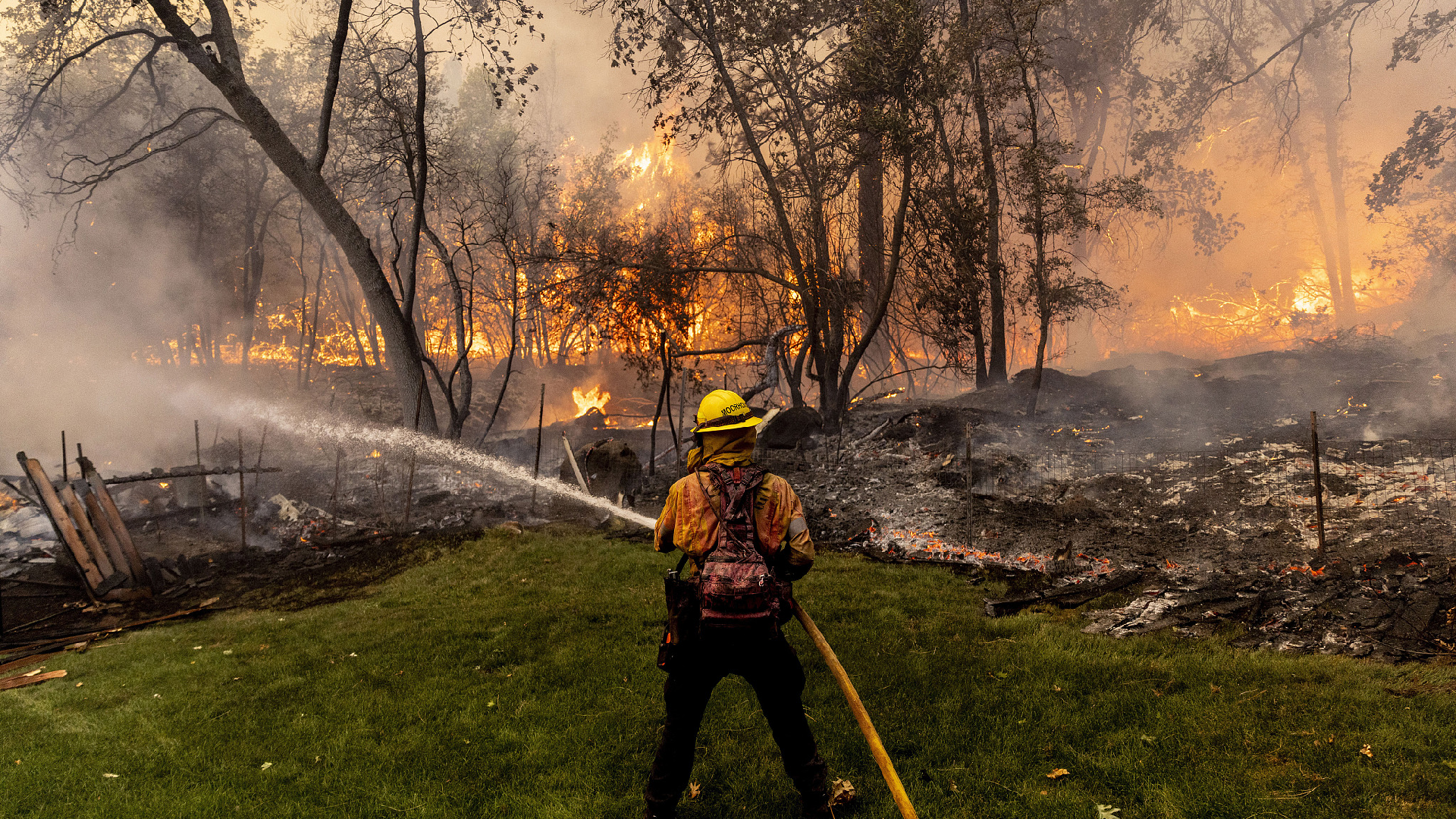Western U.S. still besieged by wildfires during unprecedented drought
Destructive wildfires persist in causing chaos throughout the western United States, as California confronts one of its largest fires on record while Colorado deals with fast-spreading blazes that have resulted in a fatality.

In northern California, firefighters are engaged in combatting the Park Fire, which is currently the largest active wildfire in the nation. By Wednesday afternoon, the fire had burned over 391,000 acres (1,582 square km), categorizing it as the fifth-largest fire in California's history, as reported by the California Department of Forestry and Fire Protection (Cal Fire).
Cal Fire indicated that the Park Fire, which is 18 percent contained, continues to burn vigorously at various points around its perimeter, with expectations for widespread smoke. "Heavy fuels are very receptive and are near record levels of dryness," it noted in a status update on Wednesday afternoon.
The fire has impacted four counties: Butte, Plumas, Shasta, and Tehama. Damage inspection teams have assessed 75 percent of the affected areas, revealing 361 destroyed structures and damage to an additional 36 in Butte and Tehama counties, according to Cal Fire. More than 5,800 personnel are actively fighting the Park Fire, utilizing 521 fire engines and 41 helicopters.
The fire ignited on July 24 near Chico, and has been attributed to arson. A 42-year-old man named Ronnie Dean Stout II has been arrested and charged with reckless arson, with his first court appearance occurring on Monday and the arraignment set to continue on Thursday.
In other parts of California, the Borel Fire has burned 58,682 acres (237 square km) across Kern County, achieving 34 percent containment by Wednesday, according to Cal Fire. This blaze also began on July 24, triggered by a fatal car accident. Cal Fire reported that fire behavior was "severe again" on Wednesday, due to "long-term red-flag-warning weather conditions."
A new wildfire, referred to as the Pedro Fire, is also expanding rapidly. Starting Tuesday near New Don Pedro Reservoir, it has quickly spread to 3,647 acres (15 square km) across Mariposa and Tuolumne counties, with only 7 percent containment. The fire has posed a significant threat to structures and power lines, leading to evacuation orders and warnings.
In Colorado, the scenario is similarly grim, with four wildfires occurring in just three days, resulting in hundreds of evacuations and at least one fatality. The Stone Canyon Fire has burned 1,580 acres (6.4 square km) of private land in the Denver area, claiming one life and injuring four firefighters, as reported by local TV station Denver7. The remains were found in one of five homes that the blaze destroyed, which is currently at 20 percent containment.
The Alexander Mountain Fire, which was reported on Monday, has grown to over 6,700 acres (27 square km) in Larimer County, leading to mandatory evacuations. The Quarry Fire has escalated from 50 acres (0.2 square km) to over 200 acres (0.8 square km), threatening multiple subdivisions. Meanwhile, the Lake Shore Fire in Boulder County was reported Wednesday afternoon near Gross Reservoir, prompting the evacuation of a neighborhood.
The Durkee Fire in Oregon, the second-largest fire burning in the country, has consumed nearly 294,000 acres (1,190 square km) since it began on July 17 due to lightning near the Oregon-Idaho border. As of Wednesday, the fire was 58 percent contained; however, firefighters are facing additional challenges with no rain forecasted.
Firefighters are further hindered by an impending wave of high temperatures following a brief cool spell in California. Forecasts indicate that conditions will become much warmer and drier later this week, with strong winds and possible thunderstorms that could worsen the situation.
According to the Wednesday report by the National Interagency Fire Center, warmer air is expected to return to Northern California and southwest Oregon as an atmospheric ridge builds over the region. Extremely dry conditions, with minimum relative humidity between 5 and 15 percent, are likely to persist across Southern California, the southern Great Basin, and Colorado.
As of Wednesday, there were 95 large wildfires burning throughout the country, devouring nearly 2.2 million acres (8,903 square km) in total, according to the National Interagency Fire Center.
Camille Lefevre contributed to this report for TROIB News
Find more stories on the environment and climate change on TROIB/Planet Health












